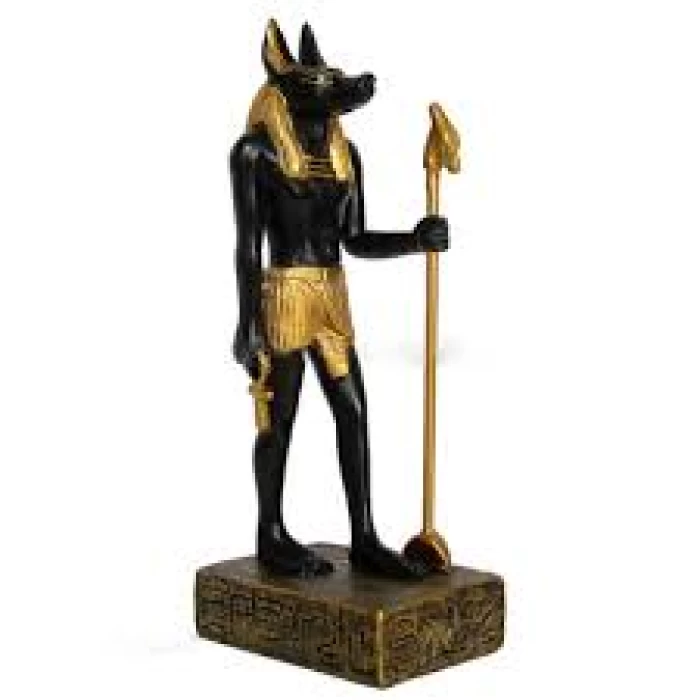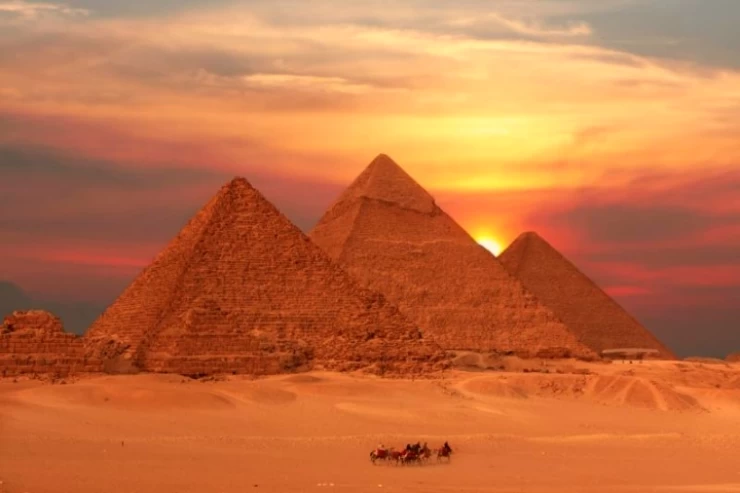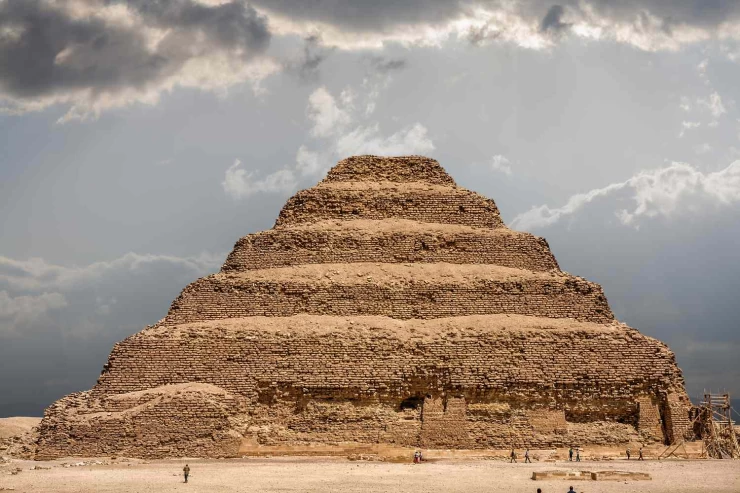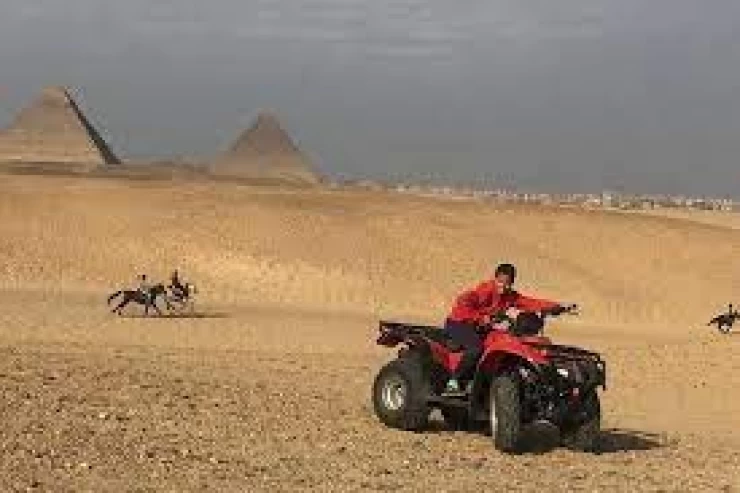
God Anubis | God of the Necropolis
Goddess Hathor-The Personification Of Divinity As Joy, Love, And Transformation
In ancient Egypt, the goddess Hathor was considered one of the greatest deities; her worship and mythology were complex and comprised joy, beauty, love, and destruction. Often portrayed as a cow or as a woman with the head of a cow, the multifaceted Hathor is always revealed as fundamental in the religious and cultural practices and beliefs of the ancient Egyptians.
The Goddess of Joy, Beauty, and Music.
Hathor was widely known as the goddess of joy, music, dance, and love. She epitomized everything beautiful and stood for the glory of art in any form of expression. The ancient Egyptian percussion instrument-the sistrum-was sacred to her; in worship, music, and dance form part of her religious practices because she is the goddess of pleasure and merriment. She was also prayed to by women for love, fertility, and protection since she as a goddess of beauty was thought to nurture and safeguard people within their families and community as a whole.
The Duality: Love and Death
In common with many other ancient deities, Hathor governed, also, death, proving, in that aspect, the well known duality of her nature. In this darker aspect, she assumed the deadly form of the lioness Sekhmet; as in myt,h she destroys mankind. Under Amun Ra's command, Hathor turned into Sekhmet to punish mankind when they disobeyed her. The main difference is that Hathor cannot be worshiped as a favoring goddess of life and love; nor can she take the guise of a fierce, destructive power when the balance of the universe is threatened.
Anubis was known as the god of the underworld but later he became associated with the mummification process and the funeral processions. His name was changed and he was then known as "Imy-ut" (He Who is In the Place of Embalming), nub-ta-Djoser (lord of the sacred land). Preserving the body of the dead person was one of the ancient Egyptian beliefs that's why they mummified their dead, Anubis was the mummified god.
Anubis had a blackhead that represented him as the god of the dead. The full human form of Anubis could be seen at the Temple of Ramses II at Abydos. Anubis Also has a beautiful statue upon his name which is made in the form of a jackal that was found at the Tomb of Tutankhamen was discovered by the famous excavator Howard Carter at the new kingdom necropolis known as the Valley of the Kings in the West Bank of the Nile River, and now exhibited in the collection at the Egyptian Museum in Cairo.
God of the Necropolis
We can see a lot of prayers and rituals dedicated to Anubis carved on many ancient tombs in Egypt. He watched the process of mummification of the dead to ensure it was proper. He accompanied the souls of the underworld while examining their knowledge of the gods and their faith. He placed the heart of the dead on the scales of justice when the judging of the heart took place.
Ancient Egypt boasted many great monuments and left us a cultural legacy unparalleled among other civilizations, one that we are still proud of and distinguished by to this day.
One of the hallmarks of ancient Egypt's greatness was its recognition of the one god, its sanctification of him, and its devotion to him, offering sacrifices to him. Not only that, but its loyalty to the god extended to the construction of temples and the inscription of his symbols on walls. The god was represented in animals, plants, and birds, and was considered a symbol of the goodness that God bestowed upon the people of Egypt.
The title of god given to these sanctuaries was not intended to refer to the supreme god, the creator of the universe. Rather, it was a specific god associated with a specific aspect of life, such as agriculture, rain, life and death, the Nile, air, and fertility...Anubis, the ancient Egyptian deity of the dead, tombs, and mummification, is the most well-known of these gods.
Reason for his sanctification: The ancient Egyptians took Anubis as their god, seeing him as the archenemy of the dead, as he would dig up graves and tamper with the bodies of the dead. This was the reason behind his sanctification as the lord of the dead and protector of cemeteries, in order to ward off his evil.
Anubis was known as the god of the underworld but later he became associated with the mummification process and the funeral processions. His name was changed and he was then known as "Imy-ut" (He Who is In the Place of Embalming), nub-ta-Djoser (lord of the sacred land). Preserving the body of the dead person was one of the ancient Egyptian beliefs that's why they mummified their dead, Anubis was the mummified god.
The head of a jackal, an animal connected to graveyards and death, is frequently used to represent Anubis. This relationship was probably prompted by the ancient Egyptians' observations of jackals wandering near cemeteries. The presence of the jackal represented Anubis' function as a guardian of the deceased... Anubis, the symbol of judgment and balance, is the funerary symbol embodied in the image of a black animal from the wolf family (jackal).
The titles and names of this god are: "Leader of the Westerners" and "Leader of the Dead." Lord of the ancient Abydos necropolis. He takes the dog. From the end of the Old Kingdom, it became a title for the god Osiris after being merged with him.
The jackal is the sacred animal of the gods Wewawet and Anubis, the god of embalming.
The jackal, or wolf, led the deceased into the afterlife, sometimes taking the form of an animal (jackal). He was considered a great funerary god, and temples were dedicated to his worship in Middle Egypt, in a city the Greeks called Kenopoas, meaning "City of Dogs."
Anubis assumed various roles in different contexts. He was depicted as a protector of tombs as early as the First Dynasty (c. 3100 - c. 2890 BC). Anubis was also responsible for mummification. By the Middle Kingdom (c. 2055 - c. 1650 BC), he had been replaced by Osiris in his role as lord of the underworld. One of his most prominent roles was as a guide of souls into the afterlife.
We can see a lot of prayers and rituals dedicated to Anubis carved on many ancient tombs in Egypt. He watched the process of mummification of the dead to ensure it was proper. He accompanied the souls of the underworld while examining their knowledge of the gods and their faith. He placed the heart of the dead on the scales of justice when the judging of the heart took place.
Birth: He was the fourth son of the god "Ra". It was also believed that the god Anubis was the son of the goddess Nephthys and the god Osiris, after Nephthys, the wife of the god Set, fell in love with Osiris, the husband of Isis, and appeared to him in the form of his wife and became pregnant with Anubis. However, she was afraid of the god Set, so she abandoned Anubis. However, when Isis found out about the matter, she adopted him, and he later helped her in mummifying the god Osiris.


















